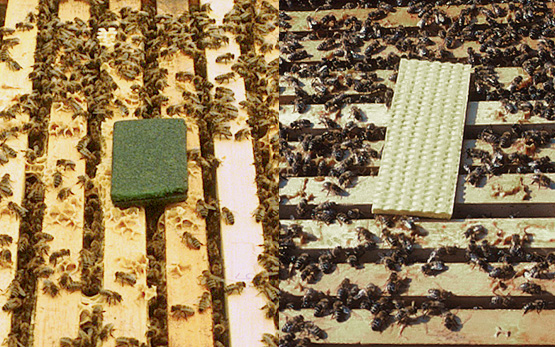Meyer M., Heitkämper K., Reissig L.
«Akku rein und losfliegen»: Drohnennutzung in der Alpwirtschaft.
Agroscope Science, 207, 2025, 1-20.
Kindermann L., Sandhage-Hofmann A., Amelung W., Börner J., Dobler M., Fabinao E., Meyer M., Linstädter A.
Natural and human disturbances have non‐linear effects on whole‐ecosystem carbon storage in an African savanna.
Global Change Biology, 31, (4), 2025, Article e70163.
Meyer M., Contzen S., Feller M., Pauler C., Probo M., Röösli A., Schmidt R., Schneider M.
Resilience of Swiss summer farms: An interdisciplinary analysis of key challenges and adaptations.
Agricultural Systems, 227, 2025, Article 104365.
Tschus L., Meyer M., Zimmert F., Bonev P.
Agglomeration bonus schemes in Switzerland: A unique national database.
In: Earth Observation (EO) and Spatial Data Science (SDS) workshop. 28. November, Publ. Earth Observation of Agroecosystems (EOA) Team, Agroscope, Zürich (CH). 2024.
Bonev P.
Agricultural subsidies, farmers coordination of conservation efforts, and biodiversity.
In: öffentliche Vorlesungsreihe der Universität Fribourg. 29. October, Universität Fribourg (CH). 2024.
Jan P., Zimmert F., Dux D., Blaser S., Gilgen A.
Landwirtschaftliche Produktion und Biodiversitätserhalt: Eine Typologie der gesamtbetrieblichen Landnutzung.
In: 47. Agrarökonomie-Tagung. 19. November, Publ. Agroscope, Tänikon (CH). 2024.
Zimmert F., Jan P., Bonev P.
Effet de la proportion de surface de promotion de la biodiversité sur la diversité des espèces à l’échelle d’une exploitation.
Agrarpolitik Blog, ETH Zürich. Agricultural Economics and Policy Group. 17. Juli, 2024.
Zimmert F., Jan P., Bonev P.
Participation in biodiversity schemes and environmental performance: Overall farm-level impact and spillover effects on non-enrolled land.
European Review of Agricultural Economics, 51, (3), 2024, 690-724.
Bonev P., Meyer M., Zimmert F.
The effect of agglomeration bonus schemes on biodiversity.
In: FRIES Seminar Series. 11. April, Publ. ETH, ETH Zürich (CH). 2024, 1-38.
Meyer M., Bonev P., Zimmert F.
The effect of agglomeration bonus schemes on biodiversity.
In: 187th Seminar of the European Association of Agricultural Economists (EAAE). 14 June, Frick. 2024.
Gazzarin C.
Auf Grasland Rindfleisch wirtschaftlich produzieren und dabei die Artenvielfalt fördern.
Montagna, 3, 2024, 24-25.
Jan P., Zimmert F., Dux D., Blaser S., Gilgen A.
Agricultural production and biodiversity conservation: A typology of Swiss farmers’ land use patterns.
Environmental and Sustainability Indicators, 22, 2024, 1-11.
Gazzarin C., Jan P.
Sustainable intensification of grass-based beef production systems in alpine regions: How to increase economic efficiency while preserving biodiversity?
Agricultural Systems, 214, 2024, 1-13.
Zimmert F., Jan P., Bonev P.
Continuous treatment effects of participation in biodiversity schemes on farmers’ ecological performance.
In: 51. Jahrestagung der Schweizerischen Gesellschaft für Agrarwirtschaft und Agrarsoziologie (SGA). 20 April, Eschikon, Lindau (ZH). 2023.
Gazzarin C.
Wirtschaftliche und standortangepasste Mutterkuhhaltung.
In: Fleischrindersymposium. 19. Januar, Publ. Plantahof, Landquart. 2023, 1-38.
Jan P., Zimmert F., Dux D.
Farm-level land use strategies in terms of agricultural production and biodiversity conservation in Switzerland.
In: Joint Conference of the Slovenian Association of Agricultural Economists (DAES) and the Austrian Association of Agricultural Economists (ÖGA). 23. September, Ljubljana - Biotechnical Faculty of the University of Ljubljana. 2022.
Gazzarin C.
Rindfleisch aus Gras: Welche Strategien sind wirtschaftlich?
In: Agrarökonomie-Tagung. 04. Oktober, Tänikon, Ettenhausen, Agroscope. 2022.
Gazzarin C.
Wirtschaftliche und standortangepasste Mutterkuhhaltung.
In: Beef.ch. 24. Juni, Strickhof Wülflingen. 2022.
Gazzarin C.
Erste Ergebnisse zur Wirtschaftlichkeit von Mutterkuhhaltungssystemen.
In: Zentralschweizer Regionaltagung Mutterkuh Schweiz. 7. Mai, Publ. Mutterkuh Schweiz, Arenenberg und Strickhof, Willerswil. 2022.
Gazzarin C., Jan P.
Wirtschaftlich optimale Produktionssysteme in der Mutterkuhhaltung: Eine ökonomische Analyse basierend auf 42 Mutterkuhbetrieben im Tal- und Berggebiet.
Agroscope Science, 138, 2022.







